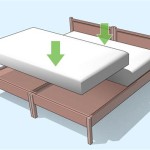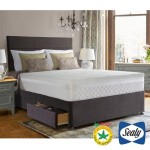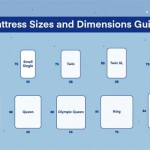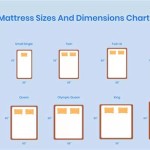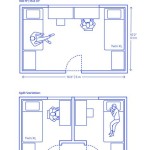Does a King Size Bed Need Center Support?
A king-size bed, with its expansive dimensions, offers ample space for slumber and comfort. Yet, the sheer size of this bed also presents structural challenges, particularly when it comes to its ability to maintain its shape and support over time. One crucial element in addressing these challenges is center support. But does a king-size bed truly need center support, and if so, why?
The answer lies in the interplay of the bed's construction, the mattress it houses, and the intended use of the bed. To fully understand the need for center support, it's essential to delve into these factors.
Understanding the Importance of Center Support
Center support is an essential component for larger beds like king-size, especially those with a traditional slatted bed frame. It acts as a critical reinforcement point, preventing the frame from sagging in the middle under the weight of the mattress and occupants. Without center support, the frame can deform, leading to an uneven sleeping surface, discomfort, and potentially even mattress damage.
The need for center support is further amplified by the weight of the mattress itself. Heavier mattresses, particularly those with multiple layers of plush cushioning, exert greater pressure on the bed frame, increasing the likelihood of sagging without adequate support.
Factors Determining the Need for Center Support
Several key factors can influence whether a king-size bed requires center support. These factors are:
1. Bed Frame Construction
The construction of the bed frame plays a significant role in determining the need for center support. Traditional slatted frames, often made from wood, rely on the slats to distribute weight and support the mattress. However, these frames can be prone to sagging, especially in the center, under the weight of a heavier mattress. This vulnerability is amplified for wide beds like king-size, which have a greater span to support.
On the other hand, platform bed frames, which have a solid base rather than slats, may not necessarily require center support. The solid base provides a more uniform and sturdy platform for the mattress, minimizing the risk of sagging. However, it is always recommended to consult the manufacturer's specifications for individual bed frames to ascertain their specific support requirements.
2. Mattress Type and Weight
The type and weight of the mattress are crucial factors in determining center support needs. Heavier mattresses, such as those with multiple layers of memory foam or innerspring coils, exert greater force on the bed frame. Similarly, certain mattress types, like innerspring mattresses, require ample support to maintain their shape and prevent sagging.
3. Usage and Occupants
The intended use of the bed and the number of occupants also play a role in determining the need for center support. Beds used by heavier individuals or couples are subjected to greater pressure, increasing the risk of sagging, particularly without adequate support.
Recommendations for King-Size Beds
Given the factors discussed above, it is generally recommended that king-size beds be equipped with center support, especially when using traditional slatted frames or heavier mattresses. Center support can be provided in various forms, such as:
1. Center Support Legs
Center support legs are a common and effective solution. These adjustable legs are designed to be placed directly beneath the center of the bed frame, providing additional support and preventing sagging. They come in various sizes and materials to suit different bed frames and weight capacities.
2. Center Support Beams
Center support beams are another widely used option. These beams are typically made from wood or metal and are attached to the underside of the bed frame, providing a stable and rigid support structure. They can be adjusted to the appropriate height for different bed frame designs.
Regardless of the method chosen, it is crucial to ensure that the center support system is installed securely and can adequately withstand the weight of the bed and its occupants. Consulting the manufacturer's instructions and seeking professional assistance if needed are essential for safe and effective support.
By understanding the importance of center support and considering the factors that influence its need, you can ensure that your king-size bed provides the optimal level of support for a comfortable and restful sleep experience.

Solid Wood King Size Platform Bed With Headboard Footboard And Slat Support Frame Center Legs Noise Free No Box Spring

Wooden Railed Bed Frame Metal Support System

Solid Wood King Size Platform Bed With Headboard Footboard And Slat Support Frame Center Legs Noise Free No Box Spring

King Metal Bed Frame Center Support Affordable Home Furniture

Glideaway Heavy Duty Steel Bed Frame Universal Slats Support For Overweight King Size Com

Glideaway Heavy Duty Steel Bed Frame Center Support Universal Metal Replacement Slats For Wooden Beds Extra Bariatric Overweight

Continental Sleep 1 5 Split Bunkie Board For Mattress Bed Support King Gray Fred Meyer

Harper Bright Designs Gray Wood Frame King Size Elegant Simple Platform Bed With Sy Center Support Legs Yjh055aae K The Home Depot

Glideaway Heavy Duty Adjustable 2 Pc Metal Bed Frame Support Bars King 1 Piece Baker S

Glance 1 In Low Profile King Hfsl 6 At Com
